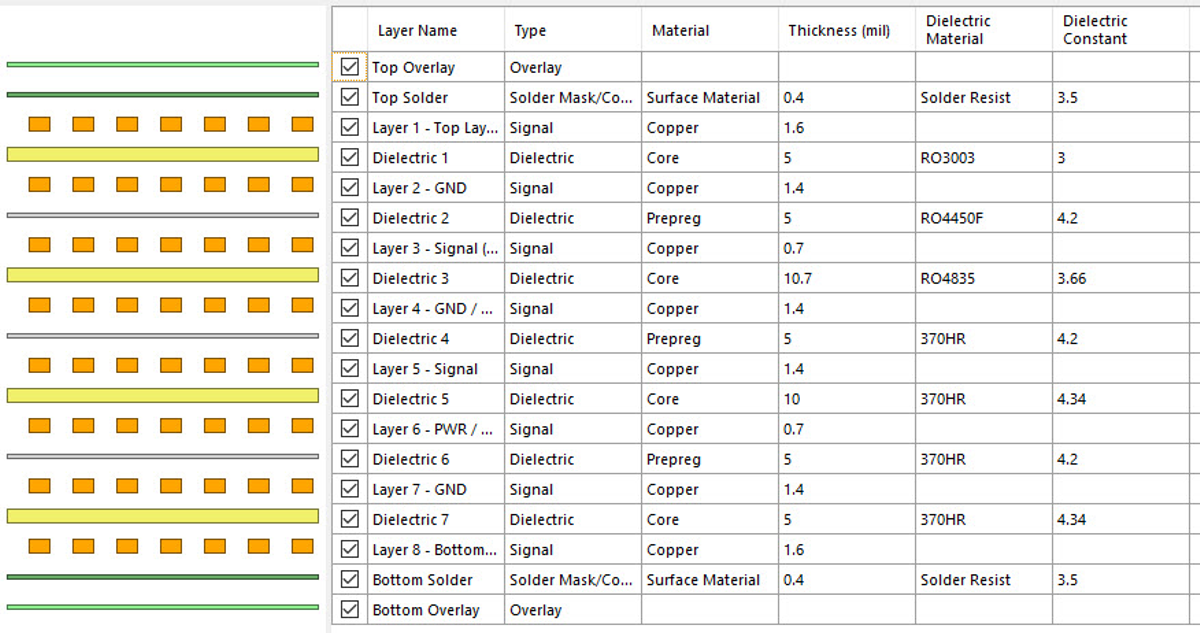TIDUF12 December 2022
5.1.3.2 PCB Layer Stackup
A normal FR4 board material results in unacceptable losses for the 77-GHz antenna included in the top two layers of this design. This design uses ceramic material from Rogers Corporation to meet the dielectric requirements. Additionally, the RO4000® LoPro® series of laminates from Rogers Corporation uses a reverse-treated foil for a smoother metal. This selection of material results in a lower variation in etched-feature dimensions. With wavelengths of less than 4 mm, these tolerances are very important. By routing the 20GHz LO clock (FM_CW) on the same layer as the antennas, only one RO4000 core is required.
 Figure 5-3 PCB Layer Stackup
Figure 5-3 PCB Layer Stackup